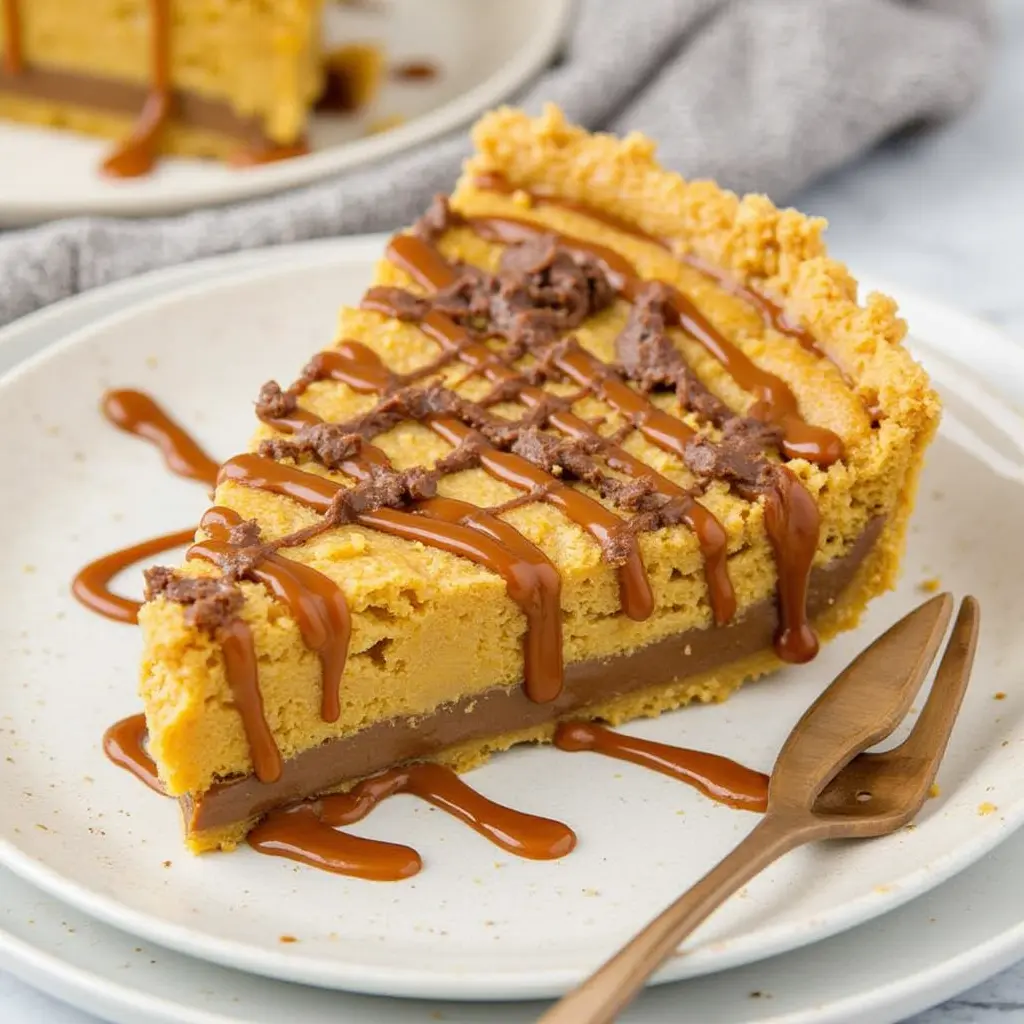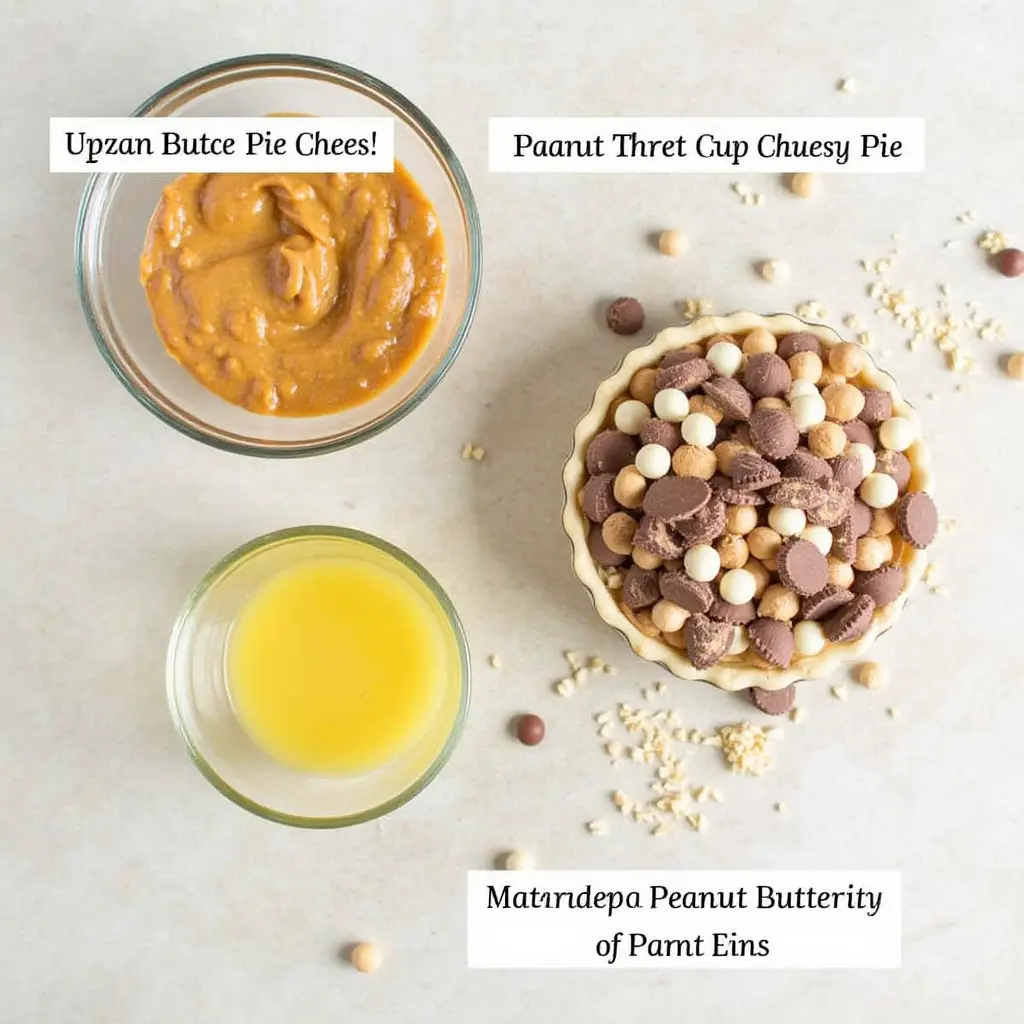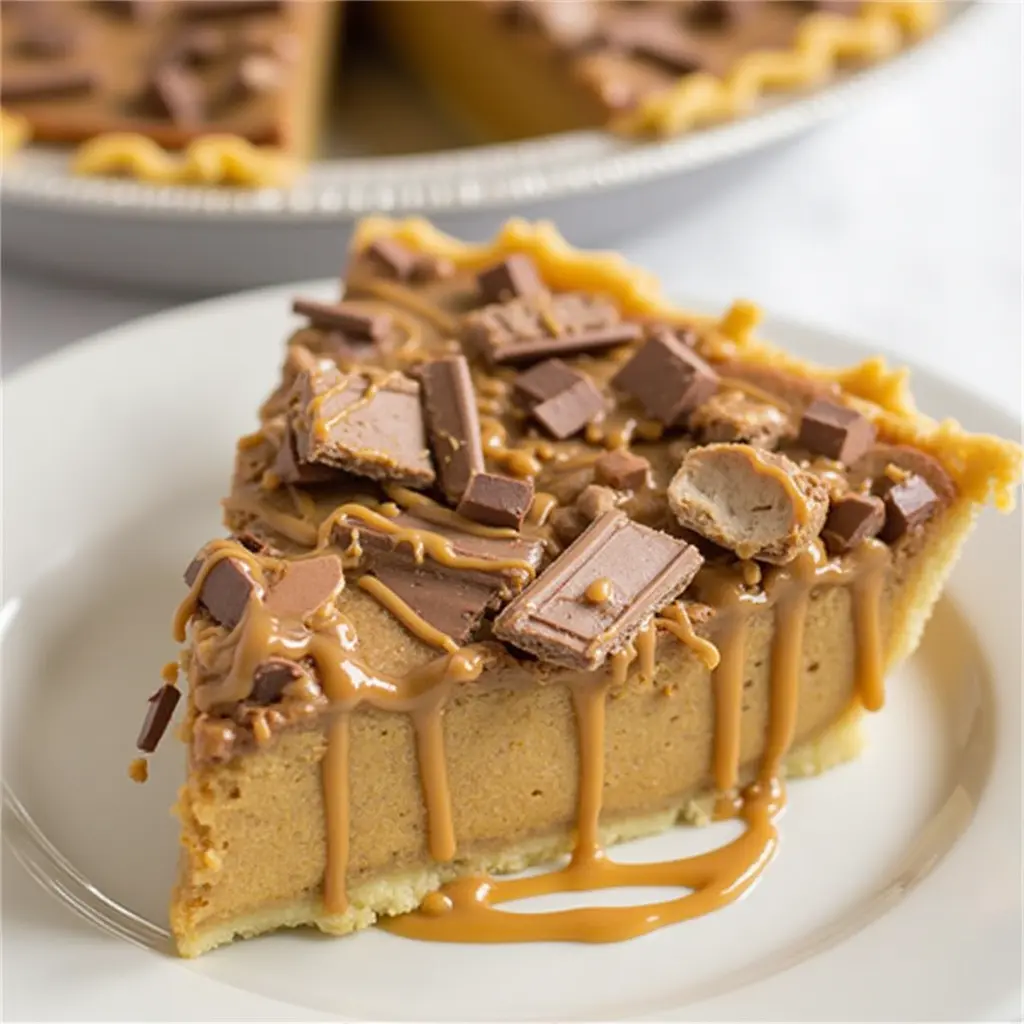Peanut Butter Cup Chess Pie: Southern Classic with a Chocolate Twist: A Dessert Revolution
Peanut Butter Cup Chess Pie: Southern Classic with a Chocolate Twist. The flaky crust, the sweet filling, the anticipation as it bakes to golden perfection—these simple pleasures connect us to traditions and memories. Among the pantheon of beloved pies, the chess pie holds a special place in Southern kitchens. But what happens when this classic meets the beloved flavor combination of chocolate and peanut butter? You get peanut butter cup chess pie—a game-changing dessert that honors tradition while embracing innovation.
This delightful twist combines the custardy, sweet base of a traditional chess pie with the rich, nutty flavor of peanut butter and the decadent touch of chocolate. The result? A dessert that feels both familiar and exciting, comforting yet surprising. Whether you’re a dedicated pie baker or a curious beginner, this recipe deserves a spot in your collection.
Let’s dive into the world of peanut butter cup chess pie—exploring its roots, walking through a foolproof recipe, and discovering tips to make your pie the star of any gathering.
Chess Pie Origins: The Southern Dessert With a Mysterious Name
Before we transform this classic into our peanut butter cup version, let’s understand what makes a chess pie so special. Chess pie dates back generations in Southern cooking, featuring a simple filling of eggs, sugar, butter, and typically a small amount of cornmeal or flour that creates its signature texture—custardy with a slightly crisp top.
The name “chess pie” has sparked many theories. Some say it derived from cheese pies brought by English settlers. Others claim it comes from pie safes called “chest pies,” while another popular theory suggests it originated when someone asked what kind of pie it was, and the response “jes’ pie” (just pie) evolved into “chess pie.” Regardless of its naming origins, this humble dessert has remained a staple on Southern tables for good reason—it’s simple, uses basic pantry items, and delivers incredible flavor.
The traditional chess pie’s appeal lies in its simplicity. The filling bakes into a sweet, buttery custard with a slightly caramelized top. This basic template makes it perfect for creative variations—including our peanut butter cup masterpiece.

The Perfect Marriage: Why Peanut Butter and Chess Pie Belong Together
Chess pie’s basic formula—eggs, sugar, and butter—creates a canvas ready for flavor additions. Peanut butter brings several winning qualities to this partnership:
- Complementary texture: Peanut butter adds creaminess while maintaining the custard-like consistency chess pie is known for
- Flavor balance: The slight saltiness of peanut butter perfectly offsets the sweetness of classic chess pie
- Structural support: Peanut butter adds body to the filling, helping it set beautifully
- Nostalgic appeal: Like chess pie itself, peanut butter connects to childhood memories and comfort
When chocolate enters this equation—mimicking the beloved peanut butter cup candy—the dessert reaches new heights. The trio of buttery crust, peanut butter filling, and chocolate creates a multi-layered experience that appeals to sophisticated palates while remaining accessibly delicious.
Essential Ingredients for Peanut Butter Cup Chess Pie
The beauty of this recipe lies in its straightforward ingredient list. You’ll need:
For the crust:
- 1 unbaked pie crust (homemade or store-bought)
For the filling:

- 1/2 cup unsalted butter, melted
- 3/4 cup smooth peanut butter
- 2 cups sugar
- 1 tablespoon cornmeal
- 1 tablespoon all-purpose flour
- 1/4 teaspoon salt
- 4 large eggs
- 1/4 cup whole milk
- 1 tablespoon vanilla extract
- 1 cup chocolate chips (divided)
What makes these ingredients work so well together is how they build upon chess pie’s traditional base. The cornmeal and flour still provide that classic chess pie texture, while peanut butter transforms the overall experience.
Crafting Your Peanut Butter Cup Chess Pie: A Step-by-Step Guide
Let’s break down the process into manageable steps:
Preparing the Foundation
- Preheat your oven to 350°F (175°C).
- Place your unbaked pie crust in a 9-inch pie plate, crimping the edges for that homemade touch.
- Sprinkle 1/2 cup of chocolate chips across the bottom of the crust. These will melt during baking, creating a thin chocolate layer that mimics the bottom of a peanut butter cup.
Creating the Perfect Filling
- In a large bowl, whisk together the melted butter and peanut butter until smooth.
- Add the sugar, cornmeal, flour, and salt, mixing until well combined.
- Beat in the eggs one at a time, ensuring each is fully incorporated.
- Stir in the milk and vanilla extract until the mixture is smooth and pourable.
Baking to Perfection
- Pour the filling into the prepared crust over the chocolate chips.
- Sprinkle the remaining 1/2 cup chocolate chips across the top of the filling.
- Bake for 50-55 minutes. The pie is done when the center is nearly set but still has a slight jiggle.
- The top will form a crackly crust—a signature feature of chess pies.
Allow the pie to cool completely before serving. This cooling time is crucial as it allows the filling to fully set, creating that perfect chess pie texture.
Troubleshooting: Common Peanut Butter Chess Pie Challenges
Even experienced bakers encounter obstacles. Here are solutions to common issues:
Filling Too Runny
If your filling seems too liquid after the specified baking time:
- Extend baking by 5-minute increments, checking frequently
- Look for a slight jiggle in the center with set edges
- Remember the pie will continue setting as it cools
Crust Browning Too Quickly
To prevent an over-browned crust:
- Use a pie shield or aluminum foil around the edges after 20 minutes of baking
- Consider placing the pie on a lower oven rack

Peanut Butter Separation
If the peanut butter seems to separate from the filling:
- Ensure your peanut butter is well-mixed before adding
- Consider using room temperature ingredients
- Mix very thoroughly at each step
Elevated Variations: Taking Your Peanut Butter Cup Chess Pie Further
The basic recipe is wonderful, but consider these creative twists:
Salted Peanut Butter Chess Pie
Add a teaspoon of flaky sea salt to the top after baking for a sweet-salty contrast that enhances both the chocolate and peanut butter.
Chocolate Crust Variation
Use a chocolate cookie crust instead of traditional pie crust for an even more intense chocolate experience.
Swirled Perfection
Reserve some of the melted chocolate, then swirl it through the top of the filling before baking for a marbled effect that’s both beautiful and delicious.
Mini Peanut Butter Cup Chess Pies
Divide the filling among mini pie tins or a muffin pan lined with pie crust for individual servings—perfect for gatherings or portion control.
Serving Suggestions: Making the Most of Your Masterpiece
A slice of peanut butter cup chess pie is divine on its own, but consider these serving ideas:
- Warm each slice for 15 seconds in the microwave and top with a scoop of vanilla ice cream
- Drizzle with warm chocolate sauce or caramel
- Add a dollop of whipped cream and a sprinkle of chopped peanuts
- Pair with a cup of strong coffee or milk for the ultimate comfort experience
Storing Your Peanut Butter Cup Chess Pie for Maximum Freshness
To keep your pie tasting its best:
- Store at room temperature, loosely covered, for up to 2 days
- Refrigerate for longer storage (up to 5 days), but allow slices to come to room temperature before serving
- Freeze individual slices, well-wrapped, for up to 3 months
Why This Peanut Butter Cup Chess Pie Will Become Your Signature Dessert
There are desserts we make once, and there are those that become part of our baking identity. This peanut butter cup chess pie has all the qualities of the latter:
- Impressive yet accessible: The recipe is straightforward enough for beginners but impressive enough for special occasions
- Balance of flavors: Sweet, salty, rich, and buttery notes create a complex taste experience
- Conversation starter: The unique combination of a traditional Southern dessert with beloved candy flavors sparks interest
- Make-ahead friendly: This pie actually benefits from being made a day ahead, allowing flavors to meld
The first time you serve this pie, you’ll likely field requests for the recipe. There’s something magical about how the dense, sweet chess pie base transforms with peanut butter and chocolate, creating something greater than the sum of its parts.
Seasonal Adaptations: Peanut Butter Cup Chess Pie Year-Round
While this pie is welcome any time, small adjustments can make it season-appropriate:
- Summer: Serve chilled with fresh berries for a refreshing contrast
- Fall: Add a pinch of cinnamon to the filling for warming notes that complement autumn gatherings
- Winter holidays: Garnish with crushed candy canes for a festive peppermint twist
- Spring: Top with edible flowers for a beautiful presentation at brunches or Easter celebrations
Frequently Asked Questions
Why do they call it a chess pie?
Chess pie gets its name from several possible origins. One theory suggests it’s derived from “chest pie,” as these desserts were stored in pie chests. Another explanation comes from the Southern dialect pronunciation of “jes’ pie” (just pie) when asked what kind of pie it was. A third theory connects it to English cheese pies that inspired the recipe. Regardless of its name origin, chess pie is characterized by its simple filling of eggs, butter, sugar, and a small amount of flour or cornmeal that creates a distinctive custard-like texture with a slightly crispy top.
What is the difference between chess pie and regular pie?
Chess pie differs from other pies primarily in its filling composition. While fruit pies contain fruit fillings and cream pies have dairy-based fillings, chess pie features a simple custard made from eggs, sugar, butter, and a small amount of cornmeal or flour as a thickener. This creates a sweet, buttery filling with a slightly caramelized top and custardy interior. Regular pies often include various fillings like fruits, nuts, or creams, while chess pie relies on its basic ingredients for flavor, making it an excellent canvas for variations like our peanut butter cup version.

What is peanut butter pie made of?
Traditional peanut butter pie typically consists of a cookie or graham cracker crust filled with a mixture of peanut butter, cream cheese, whipped cream, and powdered sugar. It’s usually a no-bake dessert with a light, mousse-like texture. Our peanut butter cup chess pie, however, combines peanut butter with the classic chess pie ingredients (eggs, sugar, butter, and cornmeal), creating a baked custard with peanut butter flavor enhanced by chocolate chips to mimic the beloved candy. This results in a dessert with a denser, more custard-like consistency compared to traditional peanut butter pie.
What is in a chess pie?
A traditional chess pie contains simple pantry ingredients: eggs, sugar, butter, a small amount of cornmeal or flour (as a thickener), and sometimes a touch of vinegar or lemon juice to balance the sweetness. Some recipes include milk or buttermilk for added richness. The magic happens during baking, as these ingredients transform into a sweet custard with a slightly crisp top. Our peanut butter cup chess pie builds on this foundation by adding peanut butter and chocolate chips to create a candy-inspired variation while maintaining the characteristic chess pie texture and baking method.
